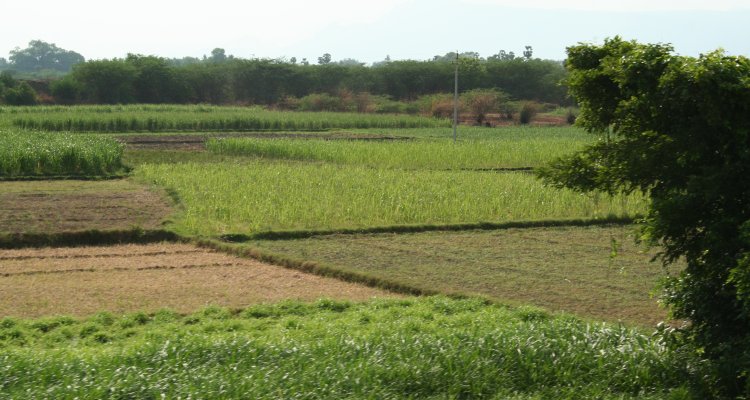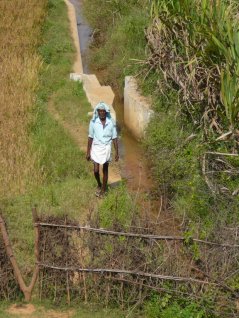
Project
Andhra Pradesh Water Management Project (APWAM)
In India the major share of water resources is being used for irrigation. The demand for water from the urban and industrial sectors is growing rapidly, causing an increased pressure on available water resources. Agricultural production in the southern state of Andhra Pradesh is mainly concentrated in the densely populated and heavily irrigated deltas of the Krishna and Godavari rivers.
Alterra and ANGRAU were partners in an FAO-funded joint applied research study in farmers’ fields located in 8 different pilot areas throughout Andhra Pradesh. Local NGO’s together with local project staff living in the villages are facilitating the participatory involvement of the pilot area farmers.

The objectives of the project were to generate and disseminate knowledge as well as build research capacity on improved agricultural water productivity of large-scale irrigation systems; strengthen strategic partnerships among research institutions, policy makers, line departments, NGO’s and Water User Associations; and support the development and design of innovative production systems to make more effective use of natural resources.
The project has met its objectives relating to equity of water distribution and water use efficiency, and creation of participatory research capacity at the level of the project sites. This was not easy; much work had to be done to achieve the necessary level of “buy-in” from farmers in the target areas. A key factor has been the dedication of the project staff. The project also benefited from a very high level of foreign technical assistance.
Services provided by Wageningen Environmental Research (Alterra)
- Enhancing people’s participation; grass-roots orientation; cultural changes in the way government works; focus on self-help and self-reliance of farmers;
- Improved on-farm crop & water management packages were developed and tested in pilot areas, resulting in overall higher water productivity;
- Up-scaling of pilot area results through remote sensing, identifying possibilities for water savings up to 40%;
- Participatory irrigation water management implemented in a canal command: water savings up to 30% realized;
- Participatory irrigation water management implemented in a tank command: there are no longer water disputes among farmers; tail-enders have sufficient tank water; groundwater is now regarded as strategic reserve; increase of cropped area up to 30%;
- Introduction of sub-surface drainage systems to combat deltaic environmental degradation and salinization: increase of water productivity up to 50%.